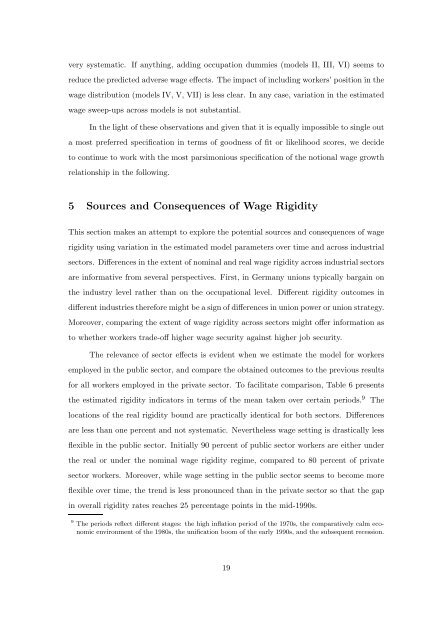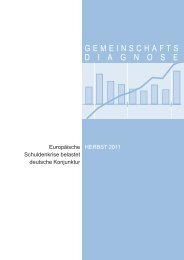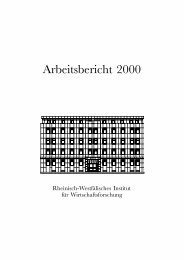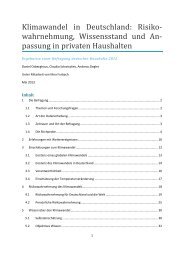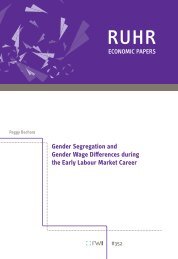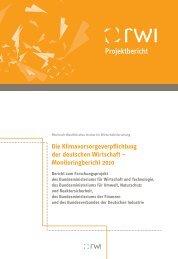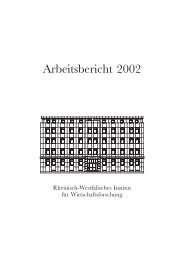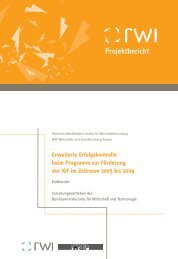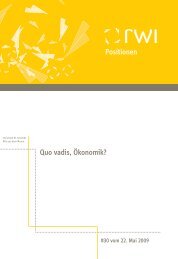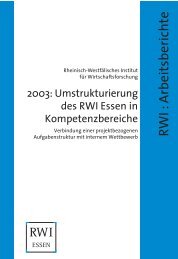RW I:Discussion Papers - Rheinisch-Westfälisches Institut für ...
RW I:Discussion Papers - Rheinisch-Westfälisches Institut für ...
RW I:Discussion Papers - Rheinisch-Westfälisches Institut für ...
You also want an ePaper? Increase the reach of your titles
YUMPU automatically turns print PDFs into web optimized ePapers that Google loves.
very systematic. If anything, adding occupation dummies (models II, III, VI) seems to<br />
reduce the predicted adverse wage effects. The impact of including workers’ position in the<br />
wage distribution (models IV, V, VII) is less clear. In any case, variation in the estimated<br />
wage sweep-ups across models is not substantial.<br />
In the light of these observations and given that it is equally impossible to single out<br />
a most preferred specification in terms of goodness of fit or likelihood scores, we decide<br />
to continue to work with the most parsimonious specification of the notional wage growth<br />
relationship in the following.<br />
5 Sources and Consequences of Wage Rigidity<br />
This section makes an attempt to explore the potential sources and consequences of wage<br />
rigidity using variation in the estimated model parameters over time and across industrial<br />
sectors. Differences in the extent of nominal and real wage rigidity across industrial sectors<br />
are informative from several perspectives. First, in Germany unions typically bargain on<br />
the industry level rather than on the occupational level. Different rigidity outcomes in<br />
different industries therefore might be a sign of differences in union power or union strategy.<br />
Moreover, comparing the extent of wage rigidity across sectors might offer information as<br />
to whether workers trade-off higher wage security against higher job security.<br />
The relevance of sector effects is evident when we estimate the model for workers<br />
employed in the public sector, and compare the obtained outcomes to the previous results<br />
for all workers employed in the private sector. To facilitate comparison, Table 6 presents<br />
the estimated rigidity indicators in terms of the mean taken over certain periods. 9 The<br />
locations of the real rigidity bound are practically identical for both sectors. Differences<br />
are less than one percent and not systematic. Nevertheless wage setting is drastically less<br />
flexible in the public sector. Initially 90 percent of public sector workers are either under<br />
the real or under the nominal wage rigidity regime, compared to 80 percent of private<br />
sector workers. Moreover, while wage setting in the public sector seems to become more<br />
flexible over time, the trend is less pronounced than in the private sector so that the gap<br />
in overall rigidity rates reaches 25 percentage points in the mid-1990s.<br />
9 The periods reflect different stages: the high inflation period of the 1970s, the comparatively calm economic<br />
environment of the 1980s, the unification boom of the early 1990s, and the subsequent recession.<br />
19


